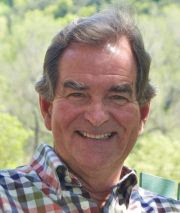Some might think that I’m referring to the opposite of global warming. Sorry to disappoint, but I’m thinking of something far more lethal and much quicker: the disappearance of the middle i.e. movement towards either pole. The two types of polarization I’d like to dwell on today are economic and political.
Most of us, in describing ourselves, like to say we’re “middle class”, middle of the road”, “average”, or some such term that implies a position far from either extreme. However, should you take a look at the distribution of financial wealth, you’d be hard pressed to lay any claim to the middle of anything economical. Professor G. William Domhoff, a Sociologist at UC Santa Cruz, published an article in September 205 and updated it in May of this year (http://sociology.ucsc.edu/whorulesamerica/power/wealth.html). In the article, he compares financial wealth with net worth. The differences are subtle and complicated for a simpleton like me, but the bottom line is that financial wealth measures the control of income producing assets (stocks, bonds, business equity, etc.) and, as such, the “ownership” of America. And guess what? You ain’t in the middle, my friend: 42% of the financial wealth is controlled by the top 1% of households. And the next 27% of the financial wealth is controlled by the next 4% of households. So, 67% of this country’s financial wealth is controlled by the top 5% of households.
The middle class is melting away at an almost indiscernible rate, just like the ice caps and with equally serious side-effects. Those of us that still believe we’re in the middle of the financial world have used various forms of credit to maintain that façade and that has led to the economic malaise where we now find ourselves. How could this have happened and what can we do about it?
History shows us that the middle class originally thrived under the stewardship of labor unions. Until that time, the dependence on the generosity of management pretty much dictated the quality of life and the quantity of pay. And we all know that the generosity in question was in short supply as sweat shops and the like were the norm. The organization of labor, however, created a strong voice and coerced the industrial magnates into recognizing and rewarding the contributions of the worker bees.
Once this middle class was well established, the need for a union became lost on the younger, newer workers and, in the last several decades, union membership has dramatically declined. Once again, career rewards are predicated upon the generosity of higher-ups and, once again, labor has been left out when it comes to collecting those rewards.
There is no reason to believe that this state of affairs will turn around until the same effort is expended to create new labor organizations and reinforce existing ones. Only then, can we hope for a thriving middle class that fuels the consumerism that has historically provided the power of our economy. While that may take some degree of civil disobedience, it remains to be seen whether the workforce-at-large is up to the challenge.
The political middle is disappearing, too. Ideologues on the right are steadfastly against anything promoted by the present administration and the left, always seeking compromise and bipartisanship, is stalled with in-fighting and everlasting debate. (They say that Democrats fall in love while Republicans fall in line and such a sentiment is readily seen today.) Politicians seem to be more interested in personal agendas than what is good for America and, while this may be nothing new, it has reached previously unknown heights. Add to this mix a public that is more interested in sound bites and scandal and a news media more interested in ratings and it is not hard to see how we got to this point.
Last week, a new standard was set as the President was heckled in his address to a joint session of Congress. And as I write this, thousands are marching in Washington D.C. in opposition to the administration as much, if not more, as the current health care proposals. No middle ground, no serious debate, no progress.
It’s time that the Democrats take a page from the Republican play book and fall in line. The party made sweeping gains in the fall elections of 2008 and needs to start swaggering a bit. Hell, even our last president knew how to play that game with his “you’re either with us or against us” mantra. Bipartisanship? Nice theory, but it doesn’t seem to be working. I’d bet that the right would be more inclined to come along if they were faced with the prospect of being left behind. That possibility is remote, though, so long as the left continues its effort to woo, coddle, and cajole. Isn’t it time for a poke in the ribs or a kick in the ass?
And what about the silent, thinking types that haven’t taken to the streets? What with last fall’s network in support of candidate Obama, couldn’t we find some uninsured souls within staunch Republican districts to make their feelings known? They’re out there. You just don’t see ‘em on the “news” because they’re just not flashy enough, if they’re there at all.
The political solution to a vanishing middle may well be pure partisanship, should the votes make it possible. The threat of being left out of the game is a sure fire motivational tool guaranteed to bring about a more flexible point of view from would-be obstructionists.
The pendulums will always swing from one side to the other and, with time, it is thought that the extremes will lessen as everything shifts more to the middle. Well, I don’t think we can rely on that formula today and the irony lies in the fact that, as the middle slowly fades away, those still stuck “in the middle” suffer the most. In our own way, we must each try to slow down the momentum that is taking us away from that “happy medium”. Our economic and political well being demand it.



No comments:
Post a Comment